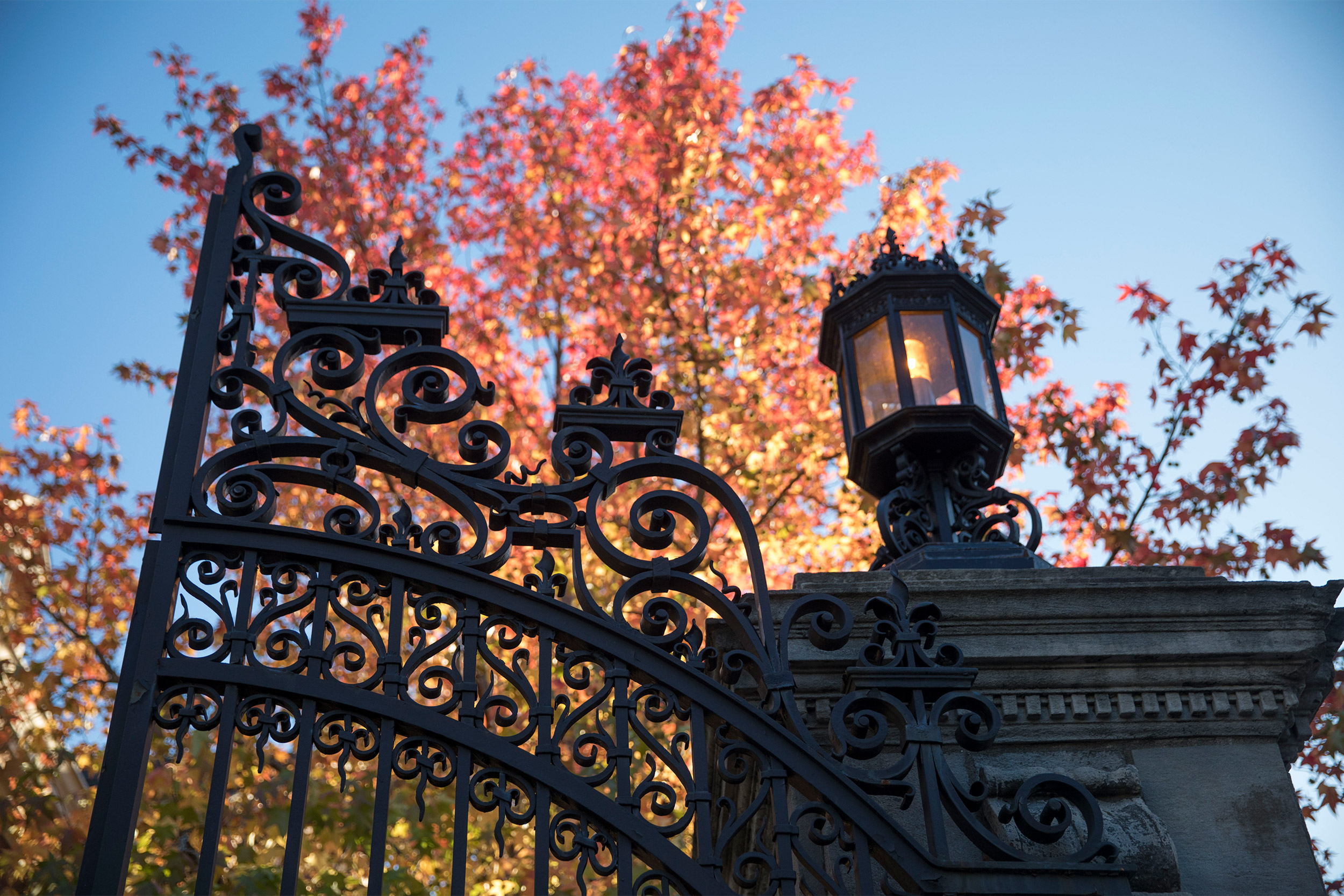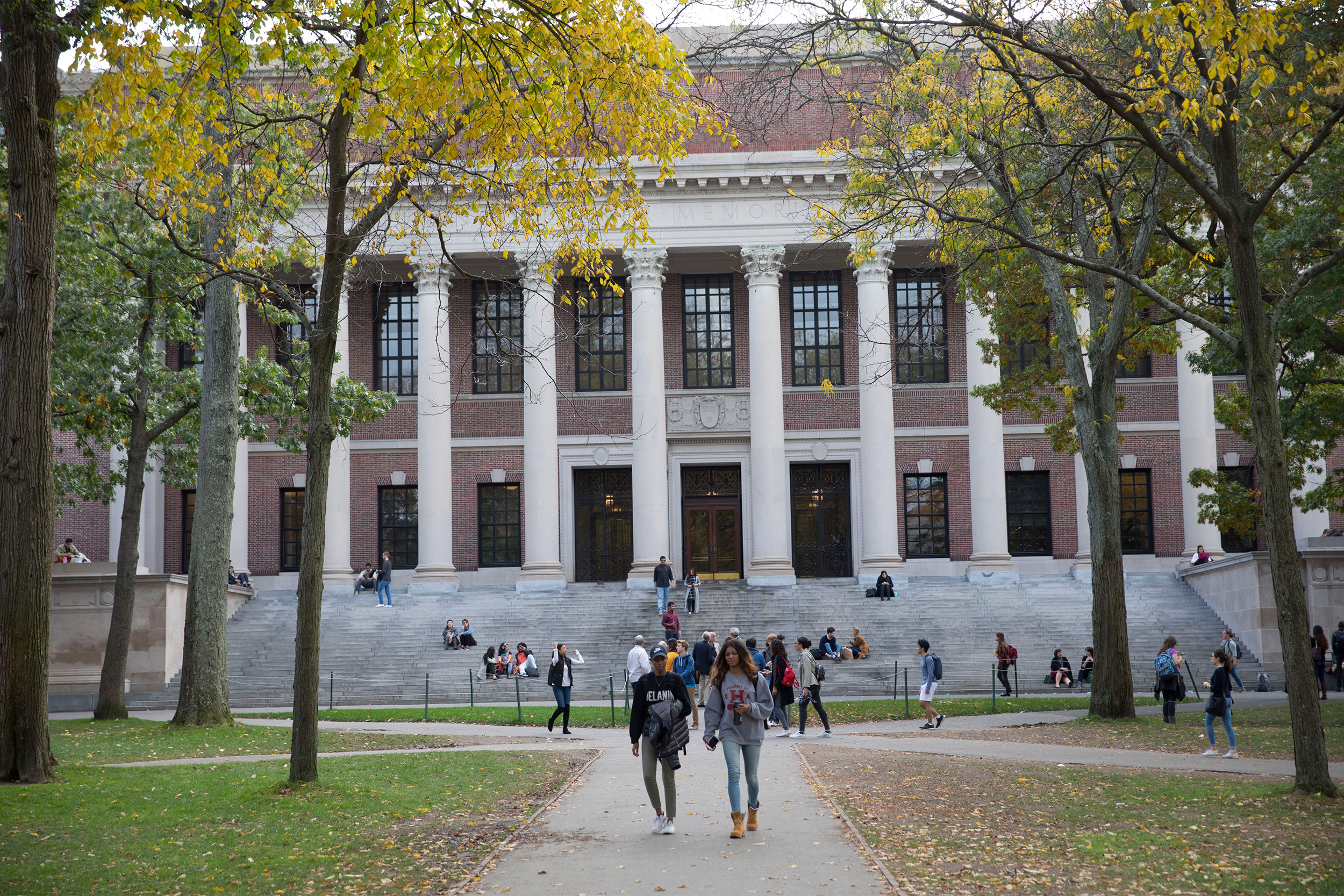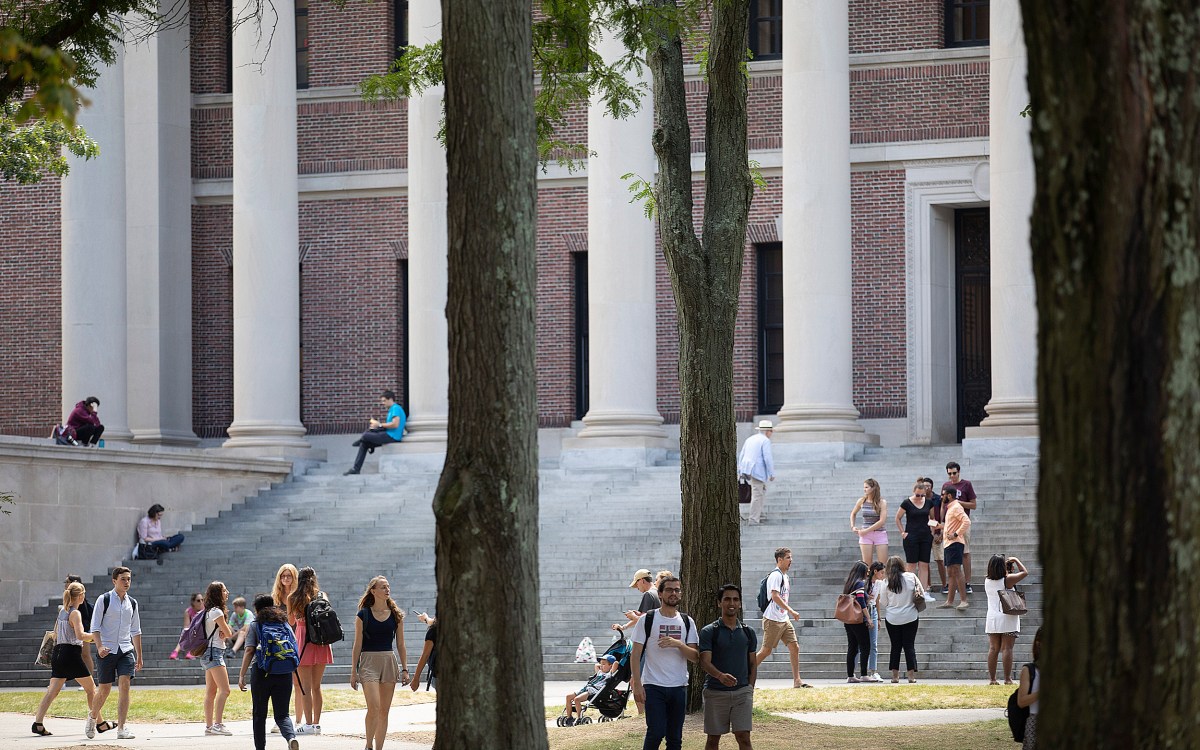
Students admitted to the Class of 2023 showed marked interest in getting involved in community service during their time at Harvard.
Kris Snibbe/Harvard file photo
Harvard College admits 1,950 to Class of ’23
Grants will ease families’ financial burden substantially; community service a draw
At 7 this evening, regular-action decisions were sent to applicants to Harvard College’s Class of 2023, and 1,950 students were officially admitted.
“The Class of 2023 is remarkably accomplished and promising by any standard,” said William R. Fitzsimmons, dean of admissions and financial aid. “Reading their applications and getting to know these individuals through their unique experiences and talents inspires great confidence for the future of Harvard College and our society.”
This year’s admitted class hails from every state and from 89 countries throughout the world. International citizens make up 12.3 percent of the class, and 8.9 percent are U.S. dual citizens; 21.7 percent come from the mid-Atlantic states, 19.6 percent are from the South, 17.3 percent from the Western and mountain states, 16.6 percent from New England, 11.8 percent from the Midwest, and 13 percent from the U.S territories and abroad.
Based on current projections, more than half of the Class of 2023 will receive need-based grants, allowing families to pay an average of only $12,000 annually. Harvard will require no contribution from the 20 percent of today’s admitted students’ families with annual incomes below $65,000, and these students will also receive a $2,000 start-up grant that helps with move-in costs and other expenses incurred in making the transition to college.
This is the 15th year of the Harvard Financial Aid Initiative (HFAI). Originally targeting students from low-income backgrounds ($65,000 or less), the program was expanded in 2007 to include middle-income families with incomes up to $150,000 or more. Since launching the Harvard Financial Aid Initiative in 2005, Harvard has awarded more than $2 billion in grant aid to undergraduates, and its undergraduate financial aid award budget has increased by more than 138 percent, from $80 million in 2005 to more than $191 million in 2018.
“Thanks to the University’s unwavering commitment to the HFAI program, Harvard costs the same or less for 90 percent of American families than in-state public universities,” said Jake Kaufmann, Griffin Director of Financial Aid. “Financial aid at Harvard is provided on the same basis to all families who need it, both domestic and international. Our strong financial aid program continues to remove financial barriers and [to] open doors for all undergraduates, bringing the best students to campus without respect to financial need. Additional recent efforts, such as the start-up grant, enable students to explore all that Harvard has to offer from the moment they arrive. All this is possible only through the continued commitment of the FAS.”
Students walking in Harvard Yard, in front of Widener Library.
Kris Snibbe/Harvard file photo

Families with incomes from $65,000 to $150,000 pay no more than 10 percent of their annual income. At Harvard, loans are not required of students, and families with incomes greater than $150,000 are generally eligible for aid as well, depending on their particular circumstances, such as multiple children in college or unusual medical or other essential expenses
For students not receiving need-based aid, the total cost of attendance (including tuition, room, board, and fees) is scheduled to increase by 3 percent, to $69,607 for the 2019–2020 academic year.
Fifty percent of those admitted to the new class are men and 50 percent are women; the applicant pool showed nearly the same divide. The Class of 2023 reflects the increasing diversity of the College’s applicants, with 14.8 percent of admitted students indicating they are African-American/black, 25.4 percent identifying as Asian American, 12.4 percent identifying as Latinx, 1.8 percent identifying as Native American, and 0.6 percent identifying as native Hawaiian. First-generation students are 16.4 percent of the class.
This year, 650 admitted students expressed interest in pursuing community service as an extracurricular activity in their four years at Harvard. This choice reflects the current generation’s growing commitment to civic engagement.
Kevin Ballen ’22 of Holworthy Hall talked candidly about how he and other current Harvard students are “seeking to direct their interest in civic engagement to meaningful, everyday opportunities to make ourselves and those around us better.” Nearly finished with his first year at Harvard after deferring his initial acceptance, Ballen is passionate about civic service and the opportunities Harvard offers to pursue it. Last fall, he worked with the Institute of Politics on the Harvard Votes Challenge as its first-year organizing coordinator.
“It was a grassroots registration effort and there was tons and tons of energy,” he said. “We had a peer freshman organizer in every single residential dorm. We held programing in the entryways, went door-knocking, and texted our classmates. We interacted with 1,400 of the 1,600 students, focusing on registration, political education, and turnout.”
Harvard College seeks to give every student the opportunity to engage in service to society and to identify how it fits into his or her life choices. This commitment to public service can be seen every day in the work of the Phillips Brooks House Center for Public Service and Engaged Scholarship (PBH) and its coordinating offices. PBH is the hub for all public service efforts at Harvard College and is home to the Center for Public Interest Careers (CPIC), the Mindich Program in Engaged Scholarship (MPES), Phillips Brooks House Association (PBHA), the largest public service organization at Harvard, and Public Service Network (PSN). It collaborates closely with the Institute of Politics (IOP) and Office of Career Services (OCS) to provide students with a rich variety of volunteer, internship, coursework, and postgraduate opportunities in public service.
Once again, recruitment provided the strong foundation for this year’s admitted class. Notably, the Class of 2023 will see six veterans admitted and 41 students who expressed interest in ROTC. In recent years, Harvard has increased its efforts to recruit individuals who have served in the U.S. military, working with groups affiliated with the Defense Department and joining the Service to School’s VetLink program in 2017.
“More military veterans are enrolling in the College than at any time in recent decades,” said Marlyn McGrath, director of admissions.
In addition to military recruitment, Harvard has continued to pursue active recruitment in the area of multicultural diversity. “We are deeply grateful for the members of the Undergraduate Minority Recruitment Program (UMRP) and the HFAI for the key roles they played in attracting this year’s outstanding students,” said Anne De Luca, associate dean for admissions and financial aid recruitment.
UMRP, HFAI, the Harvard First Generation Program, the Harvard College Connection, and the Undergraduate Admissions Council are crucial to recruitment efforts. Throughout the year, undergraduates reach out to prospective applicants by mail and social media and through hometown high school visits, and they provide hosting and tours for visitors.
Admitted students will be invited to attend Visitas, a weekend program that offers them an opportunity to experience life in Cambridge. This year’s Visitas will be held April 27‒29, although students may visit at other times as well.
Personal contact with admitted students will be very important over the next few weeks. Members of the Undergraduate Admissions Council, UMRP, the admissions staff, and faculty members will make phone calls to admitted students.
Director of Visitas Tim Smith noted, “We are grateful for the kindness and enthusiasm of current students, faculty, and staff during the visiting weekend.”
Students have until May 1 to reply.






